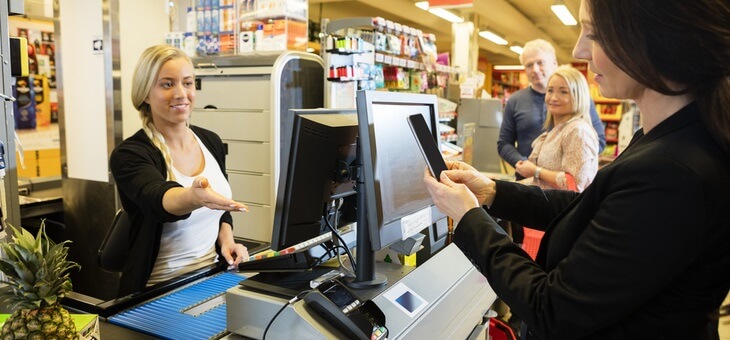Shoppers at a major Australian supermarket chain will be able to get through the checkout even more quickly from today, as payment via QR code is introduced.
They’ve been a feature of daily life for more than two years of the pandemic, and now you’ll be able to pay for your groceries using a QR code.
From today, shoppers at Woolworths and Big W stores will be shown a QR code at the checkout that is linked to Woolworths’ Everyday Rewards app.
The codes will be available at both self-serve and traditional checkouts, appearing at the end of the transaction when you would usually enter their payment details.
Read: How to recognise the latest online scams and keep the thieves at bay
Customers then pay through the app using any payment methods you’ve linked to the app. The scan will also cover your Woolworths Everyday Rewards loyalty card simultaneously, and a receipt is sent to your phone after the transaction is complete.
Woolworths managing director of Everyday Rewards Hannah Ross told The Sydney Morning Herald the move is aimed at making the customer experience as smooth as possible and ensuring people get the loyalty points they’re entitled to.
“We’ve seen a big shift in digital adoption as customers are feeling more comfortable scanning QR codes while on the move, which we weren’t really doing so much before the pandemic,” she says.
“It’s really about solving that customer pain point of missing out on their rewards points when they forget to scan, and just making a more convenient, seamless experience at the checkout.”
Read: Would you use your face to make payments
Woolworths is the first major retailer in Australia to introduce QR code payments. The technology behind the payment system was developed in-house by Woolworths’ new payment division Wpay and the company hopes to license the tech to other retailers.
Paying via QR code might be quick and easy but, like any digital payment method, it’s not without security risks.
While it’s safe to assume the QR code you receive at Woolworths or any other large retailer is legitimate, that won’t always be the case as use of the technology becomes more common.
Read: Why you should stay on top of app updates
As a QR code is simply a link to a website, it’s possible for scammers to replace legitimate QR codes with ones they’ve created themselves.
Instead of being taken to the business’s website, they are sent to the scammers’ site in order to either trick people into paying money, installing dangerous malware on their device or stealing personal information.
Be aware of QR codes in unsolicited texts or emails. It can be hard to spot a QR code that’s been replaced, even if you know what you’re looking for, and most customers won’t know what they’re looking for, or even that they should be looking at all.
If you enjoy our content, don’t keep it to yourself. Share our free eNews with your friends and encourage them to sign up.

